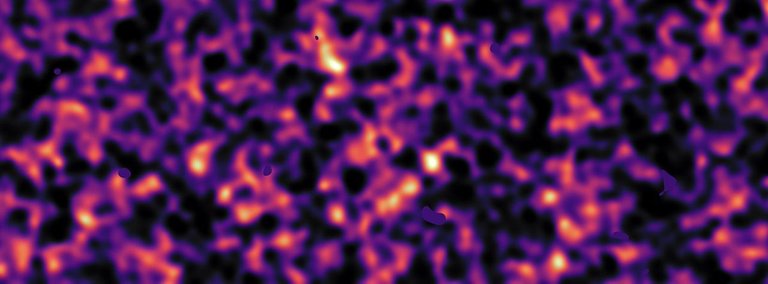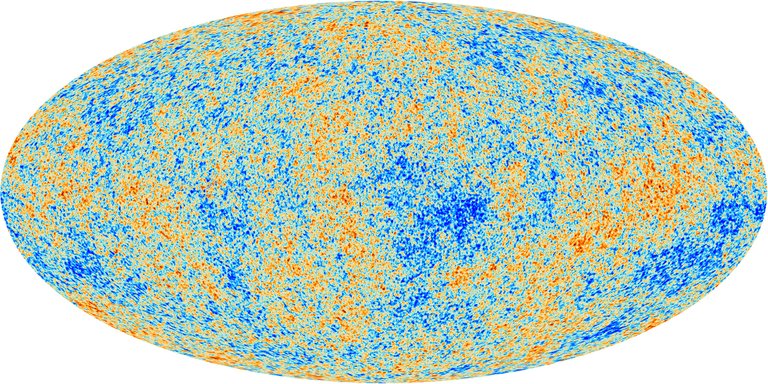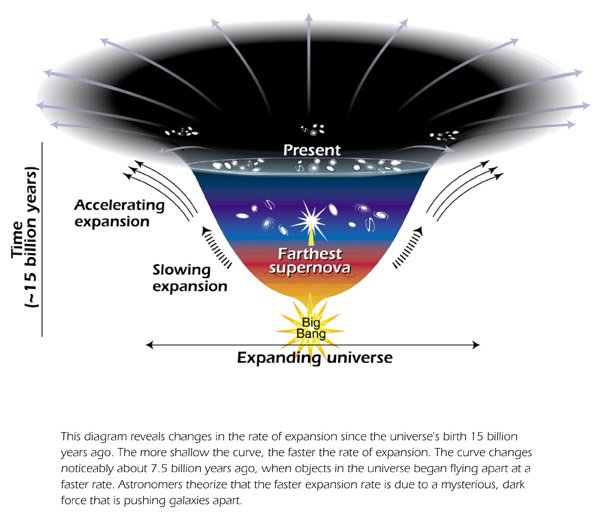Greetings, Hivers!

A map of dark matter in the Universe, obtained from data from the KiDS survey; Here the invisible dark matter is seen rendered in pink, covering an area of sky around 420 times the size of the full moon
Author: Kilo-Degree Survey Collaboration/H. Hildebrandt & B. Giblin/ESO
Source; License
As a history and science buff, I learned that millennia ago, it was believed by the Greeks that the cosmos was composed of only four elements (earth, air, fire, and water). As far as theories go, this was a simple and straightforward one that argued that combining these fundamental elements in various ways could result in the creation of the universe's wondrous diversity. Dry things are created by the combination of earth and fire, whereas wet things are created by the combination of air and water. However, the theory's flaw remains because it failed to predict anything that could be measured, which is the premise for scientific experimentation.
Leucippus of Miletus proposed one of the most revolutionary scientific concepts ever in the fifth century B.C. "Everything we see is composed of small, indivisible components called atoms," he explained. This straightforward theory has an advantage over the four-element theory of correctness.

Leucippus – ancient Greek philosopher as drawn by
Luca Giordano
Author:Didier Descouens ; Source ; License
Throughout history, scientific theory and experimentation have proved that genuine elements such as hydrogen, carbon, and others may be broken down into atoms. According to Leucippus's thesis, the atom is the smallest indivisible unit of matter that retains its identity as hydrogen, carbon, or any other unique element. However, the truth is that atoms are divisible, and his atom theory describes just a fraction of our cosmos.
It just so happens that the thing that appears to be commonplace and makes up the majority of the cosmos is quite unusual! Leucippus's atoms and the elements they are composed of account for only around 5% of what we know exists! The remaining 95 percent is referred to by physicists as the "Dark Universe," and it is composed of dark matter and dark energy. Everything composed of atoms is visible, as light reflects off of them, allowing humans to see it. A glance into space reveals the presence of stars and galaxies, all of which are gently whirling through space.
When astronomers first analyzed the motion of clusters of galaxies and the amount of matter they contained in the 1930s, they discovered that there was insufficient visible matter in these clusters to hold them together. Subsequent observations of individual galaxies supported this result, demonstrating that there was just not enough visible matter in galaxies to generate enough gravity to hold them together. They are prevented from flying apart by the phenomenon, which means that there must be something out there that we cannot see, i.e., "Dark Matter"!

The Cosmic Microwave Background as seen from the Planck satellite;
Source; License
The strongest evidence for this sort of stuff comes from studies of the cosmic microwave background, also known as the big-bang afterglow pictured above. Dark matter is confirmed to exist and accounts for the majority of the universe's uncountable spiral galaxies. The discovery of dark matter demonstrates that the matter that makes up our Earth and galaxy, the Milky Way, is a minuscule fraction of the total mass of the universe.
Earlier this century, scientists examining the cosmos's farthest reaches confirmed that as each entity moves farther from everything else in the universe, which began with a hot, dense big bang, the universe's expansion appears to be accelerating. This means that either some form of energy is driving the acceleration or gravity is not acting normally. Numerous scientists subscribe to the former school of thought and have coined the term "Dark Energy."

The universe's accelerated expansion
Source ; License-Public Domain
With advancements in science and technology, we are able to determine how much of the universe is "dark," and it can be estimated that dark energy makes up approximately 68 percent of the universe, while dark matter makes up approximately 27 percent, leaving us and everything else visible to exist at approximately 5%.
Scientists have not yet determined what dark matter is made of, but a theory called supersymmetry (SUSY) appears to account for some of it. The hypothesis anticipates the existence of a variety of new particles, some of which may constitute dark matter. If evidence for this idea is discovered, it will allow us to enhance our knowledge and comprehension of our universe from 5% to around a third.
However, dark energy will be more difficult to comprehend, but we do have some speculative beliefs about the topic that may help. One of these hypotheses dates all the way back to the phenomenal notion of the ancient Greeks and proposes that the universe's diversity derives from a single element: a vibrating thread. That is, each particle that we are aware of is essentially a distinct harmonic on the string. This is still somewhat untestable, but it does not rule out the possibility of exploring it.
It's astounding what remains to be discovered in our quest to comprehend the universe, of which we appear to be a minuscule part! Perhaps dark energy can also be preserved and turned into alternative types of energy!
It's been a fascinating discovery for me, and I felt compelled to share it with my favorite community on hive! Cheers! I eagerly await your comments!
Check these Reference links out for more:
What are the FOUR Elements?
Researchers find new way of exploring the afterglow from the Big Bang
Dark energy
Supersymmetry
Dark Energy, Dark Matter
Dark Matter and Dark Energy
